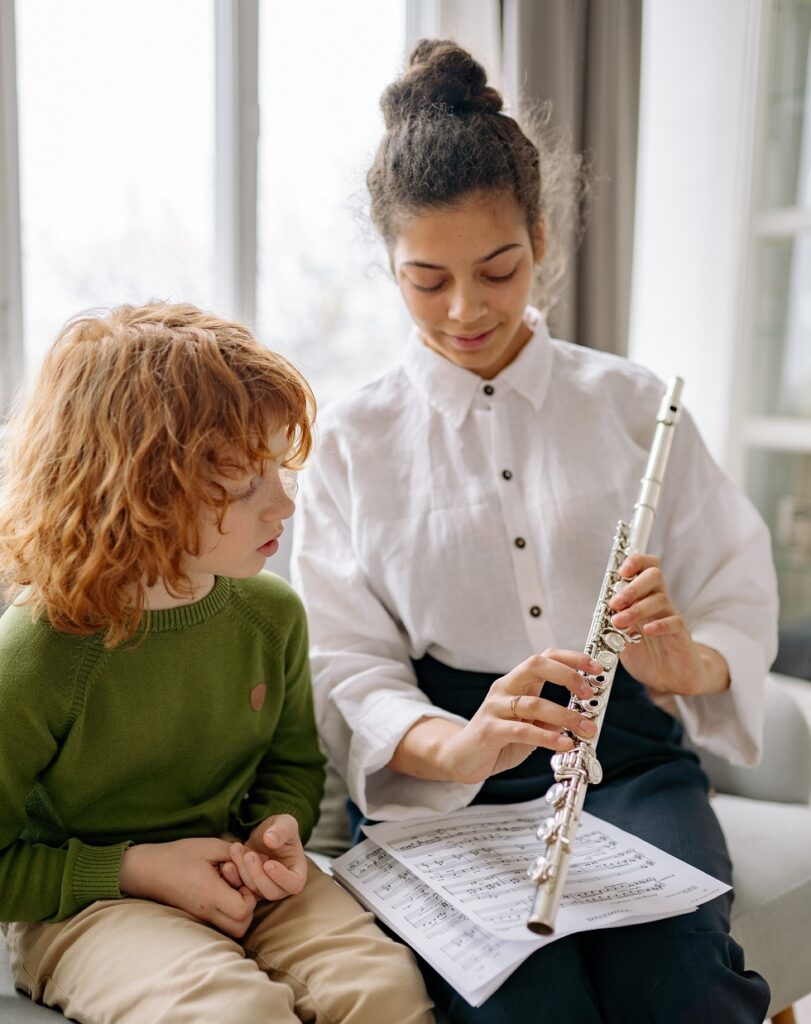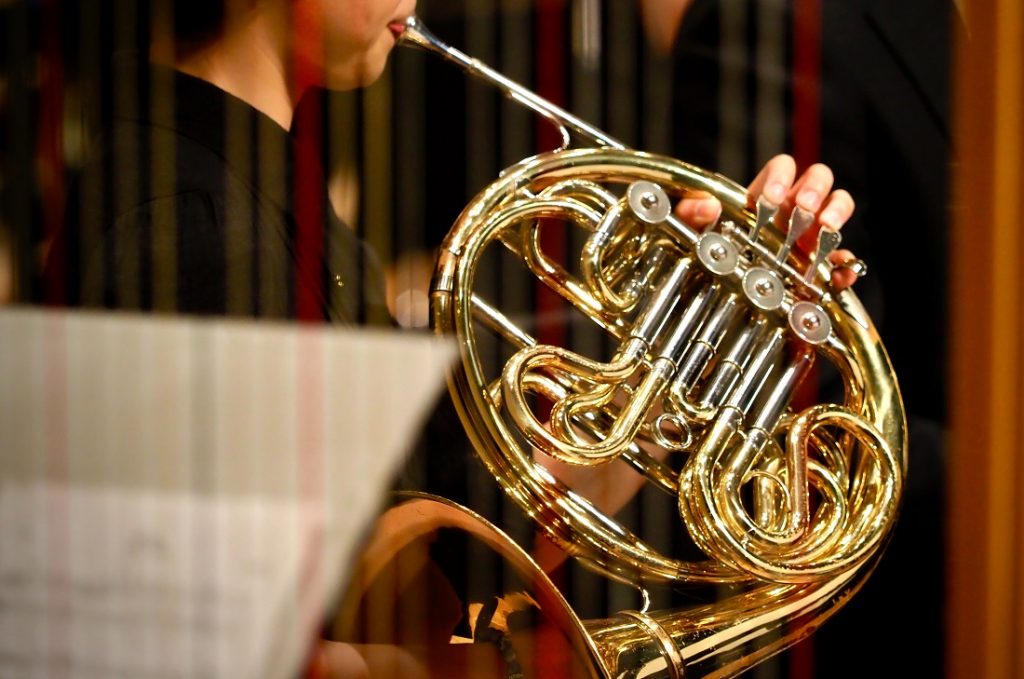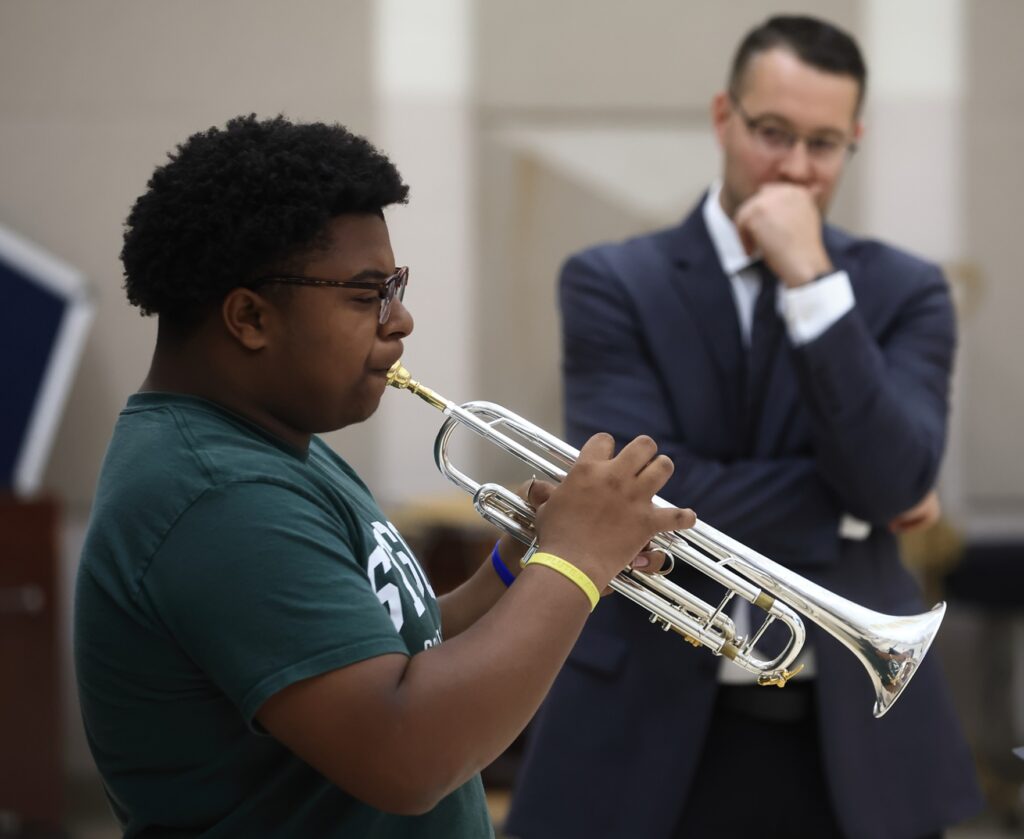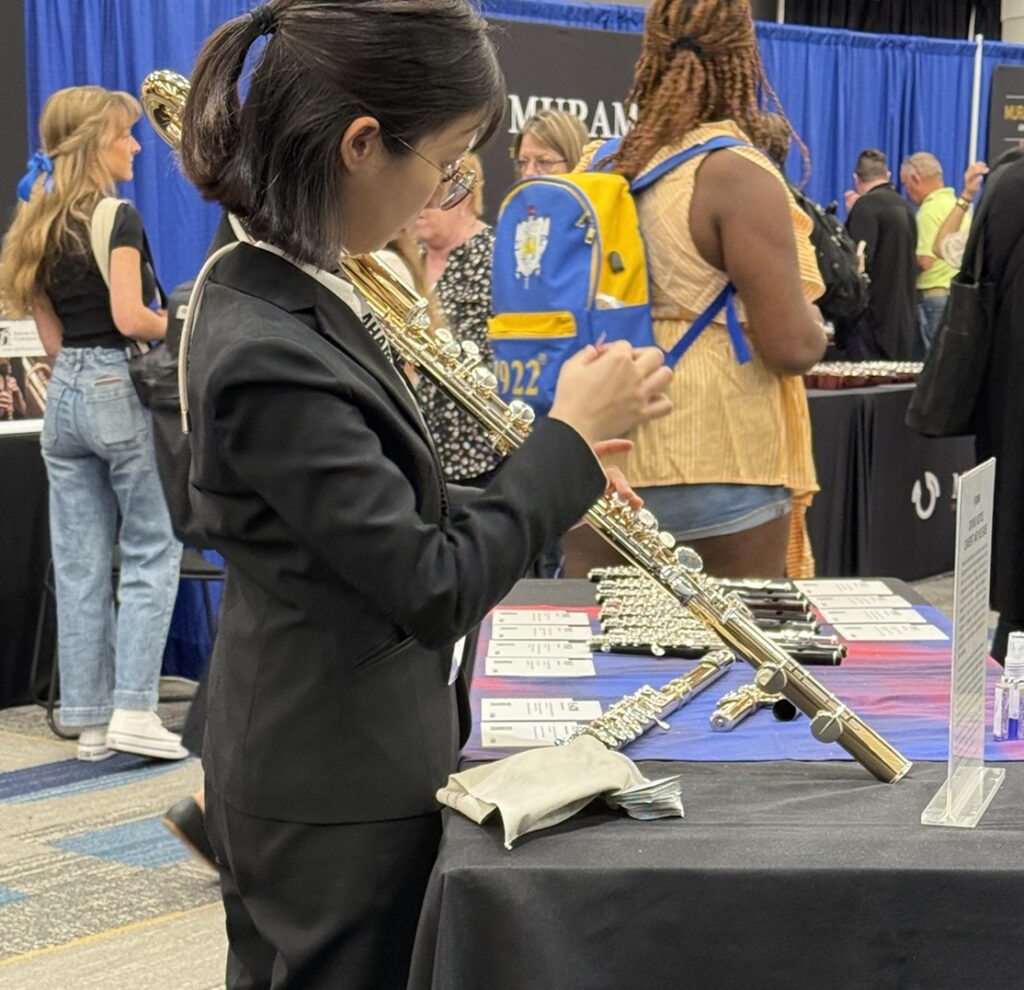Start a Flute Choir
A specialized flute choir has incredible range and can play music that was originally composed for full orchestras, choirs or wind ensembles, which is nothing short of amazing!
Are you a band director with so many flutes that you often joke that they’re “a dime a dozen”? Starting a flute choir might be the answer to this problem.
Flutes are one of the most flexible musical instruments in your band. The soprano flute’s range alone covers more than three octaves. Add in some lower-range harmony flutes, such as alto and bass flutes, and that range can be increased even more.
Flute choirs can help balance your band’s pyramid of sound and provide extracurricular music opportunities that engage your students while promoting your ensembles as a whole. This specialized ensemble can play scores that were originally designed for full orchestras, choirs or wind ensembles, which is nothing short of amazing! Plus, you only need a handful of flutists — six or more — to get started.
Buying Instruments
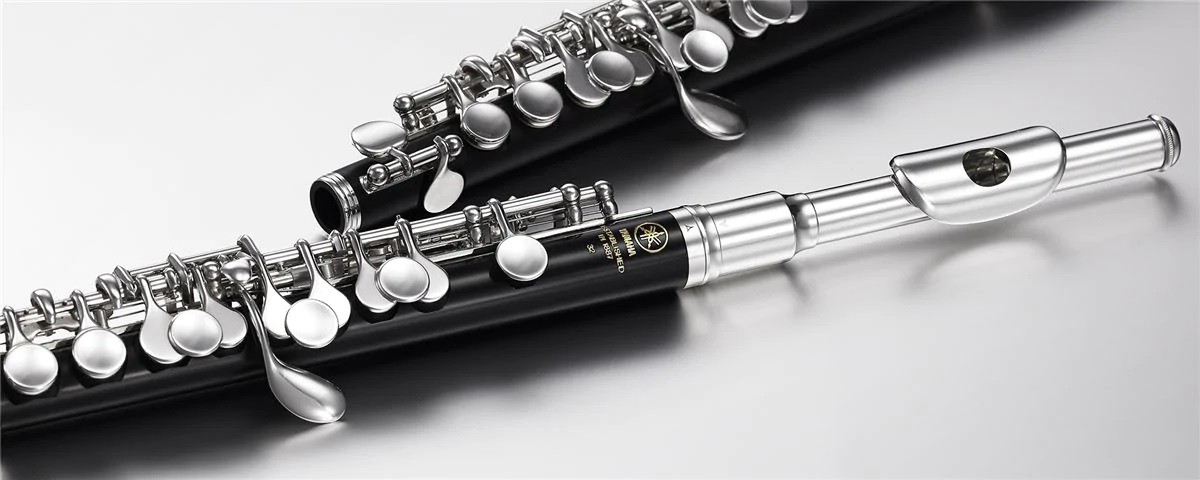 I’ll be honest, flute choirs can be expensive — alto and bass flutes have pretty high price tags. Most of the information below is about the lower-range harmony flutes because many schools have a selection or easy access to higher-range melody flutes (piccolos and soprano flutes).
I’ll be honest, flute choirs can be expensive — alto and bass flutes have pretty high price tags. Most of the information below is about the lower-range harmony flutes because many schools have a selection or easy access to higher-range melody flutes (piccolos and soprano flutes).
Once you stock your closet with harmony flutes, you’ll be able to play band pieces with small flute choirs as well. This means that your band can now perform dozens of gorgeous contemporary pieces that would otherwise be off limits. The mysterious “Frozen Cathedral” by John Mackey features alto and bass flute solos. Another excellent piece for winds with harmony flutes is “Kings Go Forth” by Edward Gregson for symphonic wind band.
To get your flute choir started, you will need:
- 1 Piccolo
- 3 Soprano flutes
- at least 2 Alto flutes
- at least 2 Bass flutes
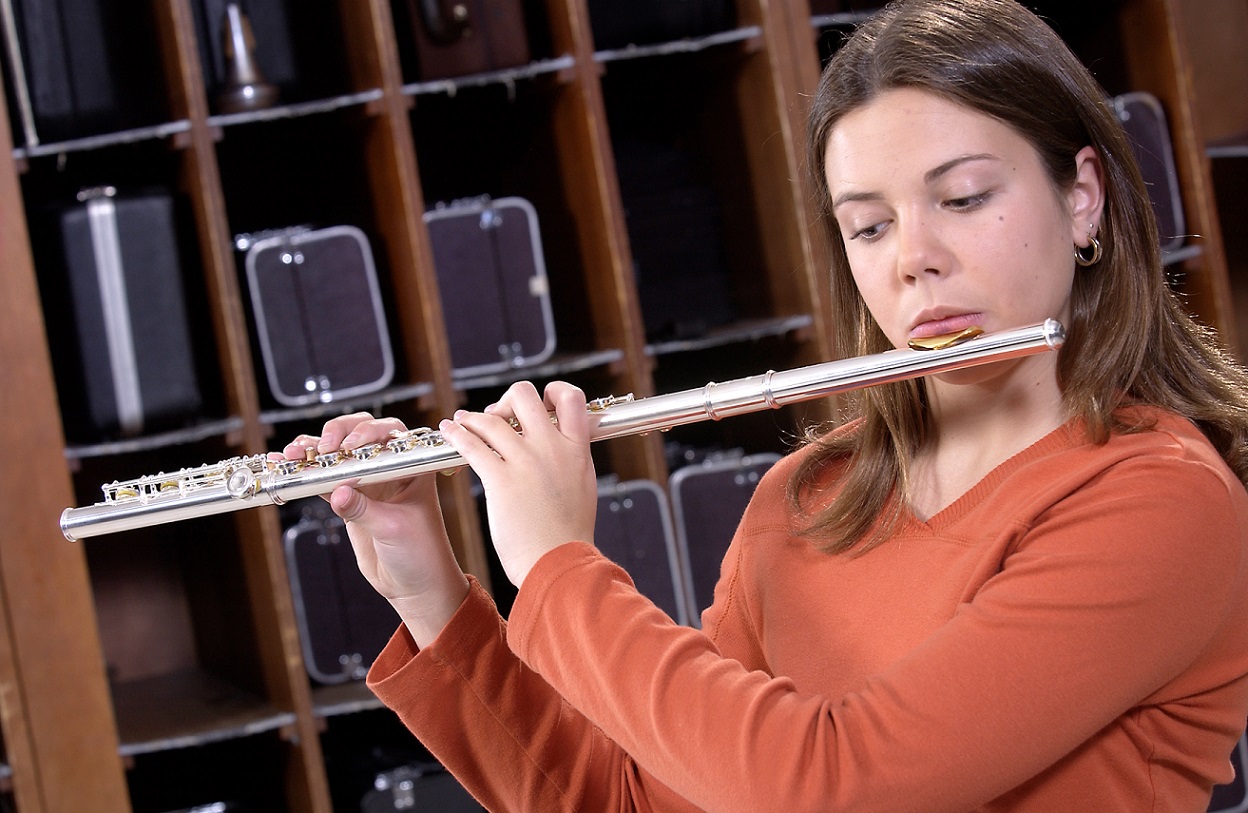 This 8-person setup will be enough to get you going.
This 8-person setup will be enough to get you going.
If you have a well-established band, you won’t need to purchase many sopranos or piccolos. And while there is such a thing as a flute d’amour (a flute between the soprano and the alto), this flute’s range will be covered by the combination of soprano and alto flutes, so it isn’t necessary.
The two lowest harmony flutes are the contra-alto (an octave below the alto) and the contrabass flute. If you have a very large group interested in joining the flute choir, consider getting one more low voice — I recommend the contra-alto, which looks surprisingly like a contrabass clarinet (you can listen to one here). This instrument is very pricey — most start at $20,000 — so if you are set on getting one, prepare for a lot of fundraising.
Curved vs. Straight Headjoints
 Most flutes come with the option of a curved headjoint. While this is often an adjustment made on soprano flutes for younger students, having a curved headjoint becomes increasingly more common as the flute gets lower. Watch flutist Gina Luciani weigh the pros and cons of straight and curved headjoints.
Most flutes come with the option of a curved headjoint. While this is often an adjustment made on soprano flutes for younger students, having a curved headjoint becomes increasingly more common as the flute gets lower. Watch flutist Gina Luciani weigh the pros and cons of straight and curved headjoints.
As Luciani mentions, curved headjoints allow students with smaller hands and shorter fingers to reach all the keys with ease. A curved headjoint also changes where the heaviest part of the flute is, meaning that it shifts most of the weight toward the player’s face, whereas with a straight headjoint, more weight is in the middle of the instrument, near the player’s arms.
Do a trial of different harmony flutes to best determine which type of alto or bass flute — and which headjoint — will best suit your students.
Harmony Flute Accessories
 Thumb Rests: I recommend thumb rests for bass and heavier flutes. Bass flutes often have metal thumb or hand rests that help players balance the extra weight. These are especially handy for students who will be playing for a long period of time but do not plan on playing with a stand.
Thumb Rests: I recommend thumb rests for bass and heavier flutes. Bass flutes often have metal thumb or hand rests that help players balance the extra weight. These are especially handy for students who will be playing for a long period of time but do not plan on playing with a stand.
Bass Flute Stand: If you are adding a bass flute to your ensemble, get a stand. These flutes weigh approximately 5 pounds, which is twice the weight of an alto.
Woodwind Stand: Having a few woodwind stands with pegs for soprano flutes and piccolos with also help out flute doublers.
Harmony Flute Materials
Don’t shy away from all nickel harmony flutes. Solid-silver alto and bass flutes simply aren’t within most school’s budgets. Here are three common types of materials that you will see in harmony flutes.
Copper Alloy: These flutes have a warm and brilliant sound. They are typically made with 70% to 85% copper and have a silver lip plate.
Nickel Silver: This material is an alloy of silver, zinc and nickel. Alto flutes are commonly made of solid nickel silver. This material produces a dark timbre. Oftentimes, nickel silver flutes are silver plated, which better protects against corrosion, but they are usually more expensive. The lip-plate is the most important part to protect against wear, so if you plan on getting a nickel silver flute, try to get one with a silver-plated lip-plate or headjoint.
Black Nickel: This material is used in jazz saxophones, but you can also find it in flutes! Black nickel is simply a plating on the outside of an instrument that makes it look darker. While many woodwind aficionados will claim that lacquer makes a huge difference in the sound, I believe the internal build of the instrument to be much more important.
Ways to Make Ends Meet
Even entry-level harmony flutes are not very economical. The lower in range you go means there is more tubing, and thus, the higher the price. Here are some tips on how to make a flute choir without having to drain the band boosters’ account:
- Recruit string members from the orchestra: Instead of purchasing lower-range harmony flutes, have double bass and cellos cover the lowest parts. Of course, by adding strings, your ensemble won’t be a true flute choir, but you will still have an extremely unique chamber ensemble with a beautiful sound
- Get second-hand instruments: You might find alto flutes and sometimes even bass flutes on Facebook pages designed for classical flute players, such as Flutes for Sale or The Flute Classifieds.
- Arrange the music yourself or have your upperclassmen try their hand at composition: After-school chamber ensembles are the perfect space to start experimenting. If you know a senior who plans to major in music education or composition, have them take the reins and try arranging or composing a piece for the choir. Specialty chamber music can get expensive. Since it is for educational purposes, you can arrange otherwise copyrighted material and perform it with your flute choir.










